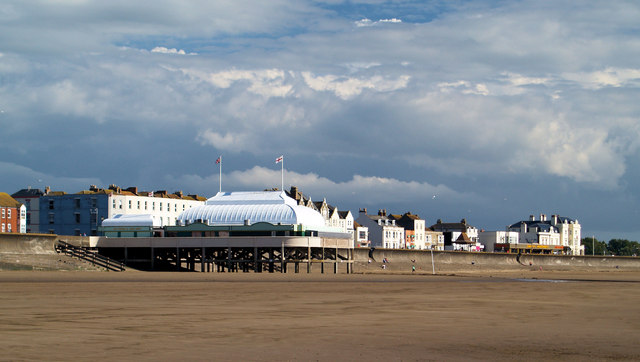The pier was built just before the First World War and was the first concrete structure of its type in Europe. Granite chippings from Penryn Colliery in Cornwall, which were used in the pier’s original construction, are still used today for routine maintenance.
Intentions to lengthen the pier did not materialize and, consequently, the pier remained the shortest in Britain, consisting of little more than a pavilion on piles. The pavilion was constructed between 1911 and 1914 and incorporates many design features associated with Brunel (1806-1859) sharing similarities with Bristol Temple Mead and Bath Spa railway stations.
Harry Parkin took over the derelict pavilion in 1968. Many years of effort have since been spent on renovation, trying to maintain its traditional concept. An application for Lottery funding was made in 1996 for further work on the roof and substructure.
Facilities in the pavilion include amusements, bingo and a pizza counter. In front is a courtyard where ice-cream and burgers are sold. One of the two side walkways is open. The pier won a ‘Britain in Bloom’ award seven years running.
In March 2011, along with 30 other piers, Burnham participated in the Party on The Pier event to mark the start of British Tourism Week.
A seasonal sweet shop, the Candy Stall, was opened at the front of the pier’s forecourt in December 2011. However, a dispute arose with Sedgemoor District Council who issued an enforcement notice requiring the the new shop to be demolished because it had been erected without permission and was felt to be out of keeping with the rest of the area. Then in February 2012, the council halted its proceedings against the pier while it investigated the matter further. In November 2012, Council officers rejected a retrospective planning application from the owner but later in the month the Council’s Development Control Committee overruled their officers and gave a temporary 5 year approval to enable discussions to continue on the building’s future.
Discover more from LandmarkLocation.com
Subscribe to get the latest posts sent to your email.


